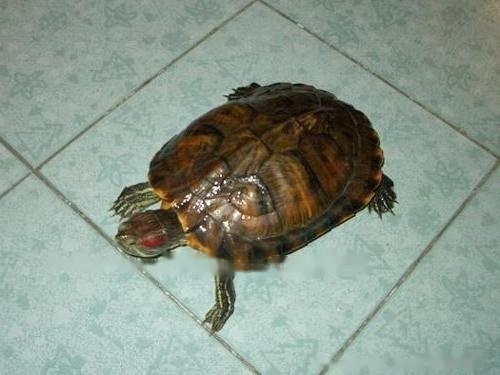We all know that not every egg laid by a hen can hatch a chick, and the same is true for tortoise, not all turtle eggs can hatch into a turtle Yes, because some eggs are unfertilized eggs, but if we cannot identify which eggs are unfertilized eggs when hatching, it will be time-consuming and laborious to hatch one egg. So how do you identify whether a turtle egg is fertilized? Xiaobian will let everyone identify it!

How to judge whether a turtle egg is fertilized? Simple, is to see if there are white spots. It is impossible to tell whether a turtle egg is fertilized or not. If the turtle egg has white spots within 24-72 hours, it means that it has been fertilized, and no white spots appear, it is not fertilized.
In addition, it should be noted that try not to move the turtle egg that has just been laid. Some friends may move the turtle egg to the breeding box impatiently. In fact, the embryo in the turtle egg just laid is still relatively fragile. , In order to increase the success rate of reproduction, try to move the turtle eggs after 24 hours.
There are two kinds of hatching of turtle eggs: natural hatching and artificial hatching.
1. Natural incubation. There are also two methods for natural hatching. One is to dig a sand pit with a width of 20-40 cm and a depth of 20 cm (unlimited in length) at the foot of the sunny wall of the turtle pond, then fill the pit with yellow sand, and press the turtle eggs by 1 The distance of centimeters, arranged in the sand, maintain a certain humidity, and increase the temperature by the sun, and the hatchlings will emerge in 50-60 days. The second is to pile up several small sand piles around the parent turtle pond, let the mature species of turtles climb ashore at night, dig holes in the sand piles to lay eggs, and let them hatch naturally. The hatchlings will be born in about 50-70 days.
2. Artificial incubation. Put the collected turtle eggs in a wooden box with a height of 25 cm (the length is not limited, and the width should be adjusted according to local conditions). Scatter about 2 cm thick spun yarn, cover the sand with a wet towel, and keep the indoor humidity at 25-35 degrees. On a sunny day with dry air, sprinkle water on the sand 1-2 times a day, and the air humidity is high, which can reduce the number of watering. Cover the box with a damp cloth to prevent the hatchlings from escaping, the invasion of predators, and the bite of mosquitoes when the hatchlings are hatched. In this way, the hatching rate of hatchlings is over 90% within 50-60 days.
![[Dog Training 5] The training method of pet dog dining etiquette](/static/img/12192/12192_1.jpg)




